 by our College Data Analytics Team
by our College Data Analytics TeamPiedmont International University total enrollment is approximately 951 students. 330 are undergraduates and 55 are graduate students.
Male/Female Breakdown of Undergraduates
The full-time Piedmont International University undergraduate population is made up of 48% women, and 52% men.
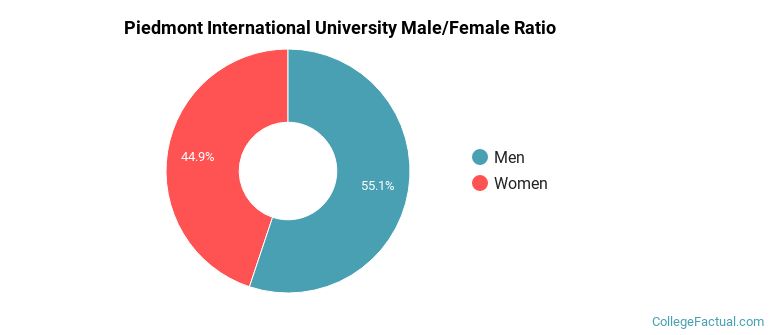
For the gender breakdown for all students, go here.
Piedmont International University Racial/Ethnic Breakdown of Undergraduates
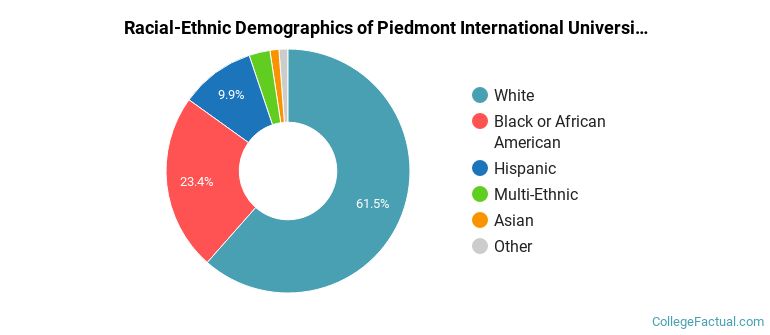
| Race/Ethnicity | Number |
|---|---|
| White | 176 |
| Black or African American | 58 |
| Hispanic | 43 |
| Unknown | 22 |
| Multi-Ethnic | 18 |
| International | 7 |
| Asian | 4 |
| Native Hawaiian or Pacific Islander | 1 |
See racial/ethnic breakdown for all students.
Male/Female Breakdown of Graduate Students
About 27% of full-time grad students are women, and 73% men.
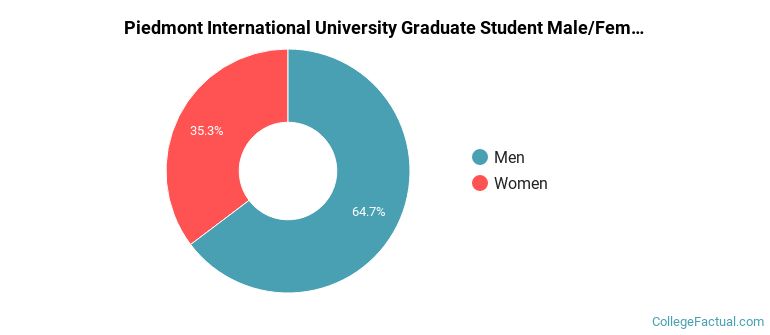
For the gender breakdown for all students, go here.
Piedmont International University Racial-Ethnic Breakdown of Graduate Students
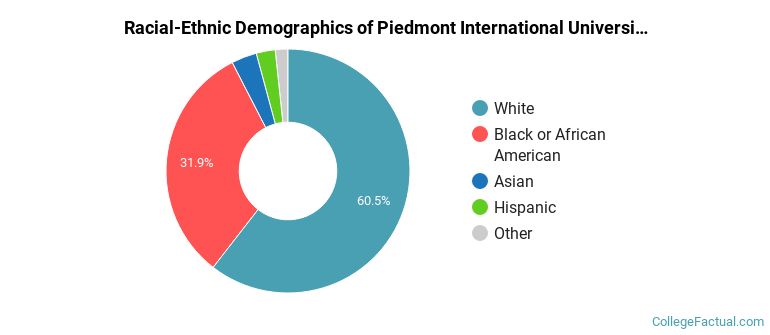
| Race/Ethnicity | Number |
|---|---|
| White | 42 |
| Black or African American | 5 |
| Unknown | 3 |
| Asian | 2 |
| Hispanic | 2 |
| International | 1 |
| Native Hawaiian or Pacific Islander | 0 |
| Multi-Ethnic | 0 |
See racial/ethnic breakdown for all students.
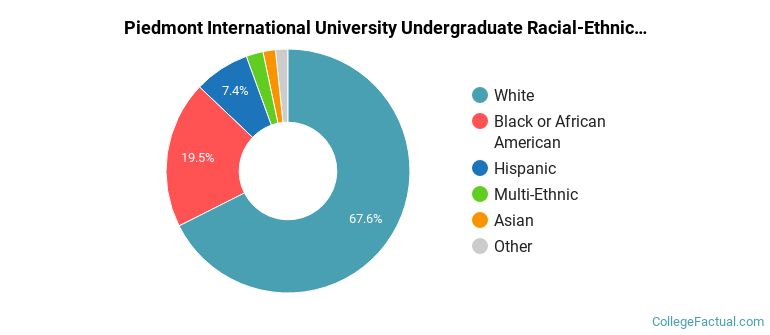
| Race/Ethnicity | Number |
|---|---|
| White | 485 |
| Black or African American | 186 |
| Unknown | 117 |
| Hispanic | 100 |
| Multi-Ethnic | 27 |
| Asian | 17 |
| International | 16 |
| Native Hawaiian or Pacific Islander | 2 |
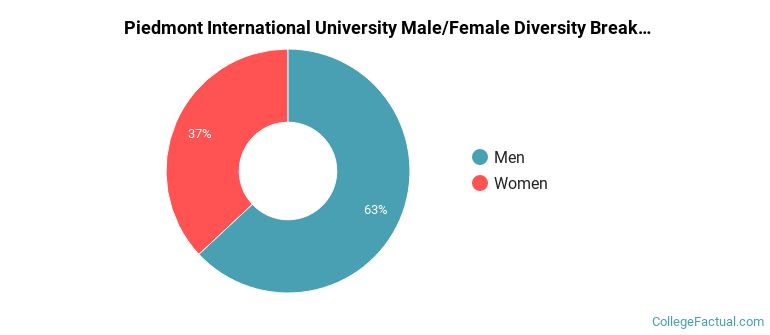
There are approximately 361 female students and 590 male students at Piedmont International University.
Piedmont International University ranks 1,296 out of 2,183 when it comes to geographic diversity.
32.14% of Piedmont International University students come from out of state, and 0% come from out of the country.
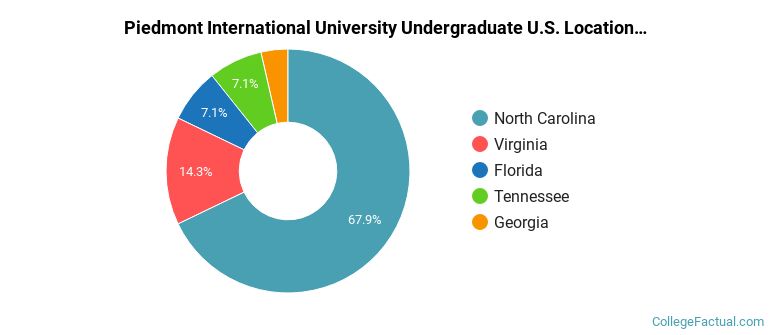
The undergraduate student body is split among 5 states (may include Washington D.C.). Click on the map for more detail.
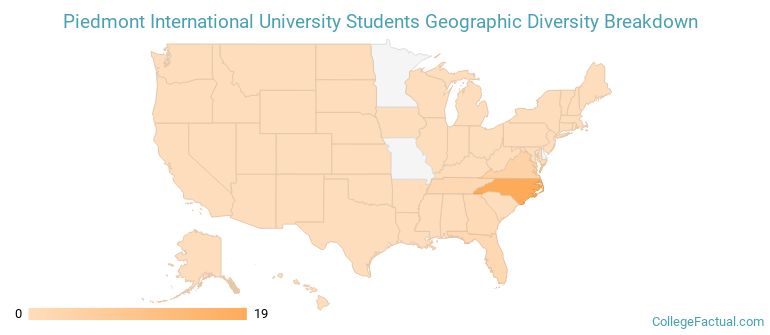
| State | Amount |
|---|---|
| North Carolina | 19 |
| Virginia | 4 |
| Florida | 2 |
| Tennessee | 2 |
| Georgia | 1 |
Students from 5 countries are represented at this school, with the majority of the international students coming from Kenya, Haiti, and Indonesia.
Learn more about international students at Piedmont International University.
A traditional college student is defined as being between the ages of 18-21. At Piedmont International University, 24.07% of students fall into that category, compared to the national average of 60%.
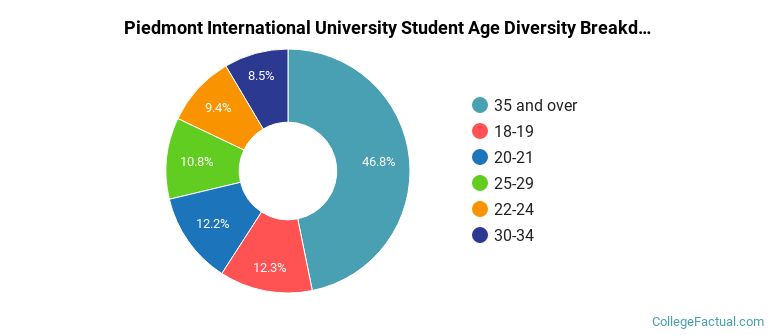
| Student Age Group | Amount |
|---|---|
| 35 and over | 308 |
| 18-19 | 81 |
| 20-21 | 80 |
| 25-29 | 71 |
| 22-24 | 62 |
| 30-34 | 56 |
| Under 18 | 0 |
Footnotes
*The racial-ethnic minorities count is calculated by taking the total number of students and subtracting white students, international students, and students whose race/ethnicity was unknown. This number is then divided by the total number of students at the school to obtain the racial-ethnic minorities percentage.
References
Department of Homeland Security Citizenship and Immigration Services
Read College Factual's Diversity Ranking Methodology.